While there is abundant information about former directors and aides of the Institute in comprehensive accounts of its history, in obituaries, and in Festschriften, things are very different for people who did not publish or whose names do not appear in printed documents. It is not easy to get a picture of the active support personnel whose efforts made smooth operations of the Institute possible – the excavation workers, porters, drivers, cleaners, illustrators, restorers, photography lab technicians, administrative assistants, and secretaries. For these people, we ultimately must rely only on the memories of contemporaries as we attempt to include them in the Institute`s ‘Oral Archive’ project. Over the past three years, around 70 former employees, their family members and friends of the Institute, were asked for mainly written statements on their personal memories (compare Brandt 2021). Many of them readily obliged; some even shared valuable photographic material with us. Only in this way is it possible to reconstruct a picture of people who once were so important to the life of the Institute, people like Maria Tzannetaki (née Rangoussi; fig. 1), who have not been mentioned in any of the histories of the Institute to date.
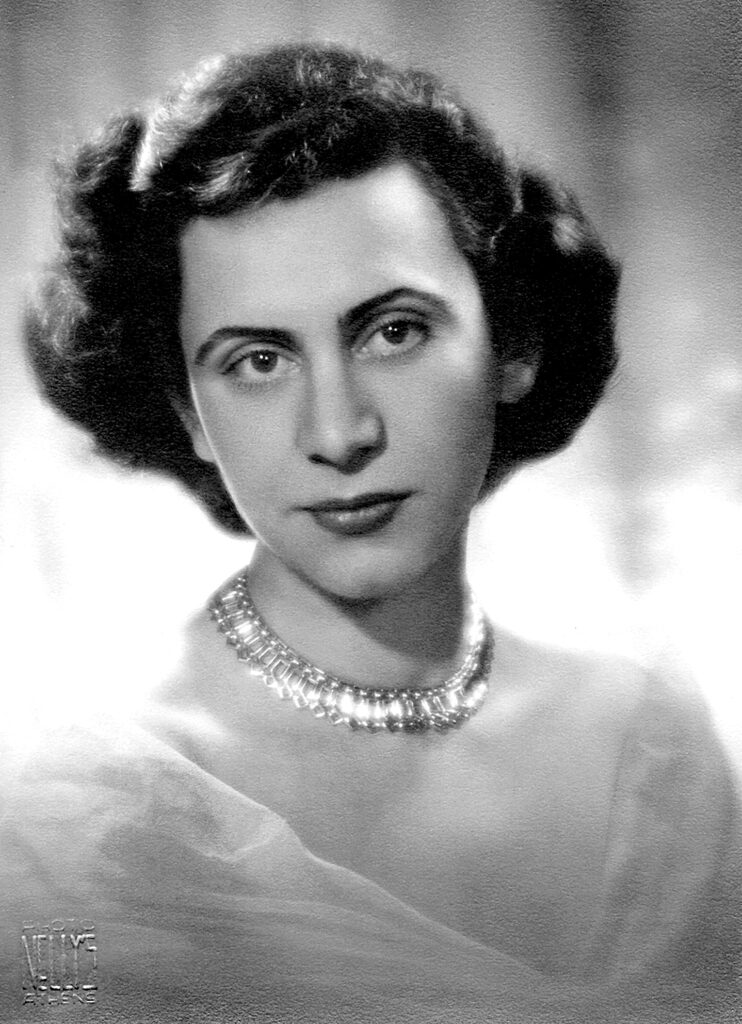
Maria Rangoussi came from a prestigious and influential Greek family (G. Saitas in Delivorrias – Chatzivassileiou 2017, 53). Her father, Antonios Rangoussis, from Paros, had served since 1940 as a councilor on the Hellenic Council of State (Συμβούλιο της Επικρατείας) and as mayor of Athens in 1950/1951 (Chalazonitis et al. 2005, 227). Her mother, Ioli Bonapartopoulou, came from Alexandria. Maria Rangoussi attended the German School of Athens and studied Classical Archeology at the University of Athens since 1943/1944. On April 1, 1953, she began work at her first and only position: she became the secretary and right hand of Emil Kunze at the DAI Athens, which had just been returned to the German state in 1951. Since such positions were not publicly advertised at the time, Rangoussi must have been recommended to the Institute, but the background of her hiring can no longer be reconstructed. Most probably, it was the married couple Semni and Christos Karouzos (the Karouzoi) who recommended the young archeologist (personal testimony of Erika Kunze-Götte, Olga Alexandri-Tzachou, Tonia Tzannetaki). The close friendship between Emil Kunze and the Karouzoi, which stretched back to the period before WWII, and their role in the quick return of the Institute in 1951 are well known. Directly or indirectly, they must have acted as intermediaries.
Arriving at a foundational moment, Maria Rangoussi joined the life of an institute that was in the midst of a new beginning. In 1951, the first year of the restitution, only a few people were present at the Institute, and they probably had a variety of different tasks: in addition the director, Emil Kunze (since June 5, 1951), the researcher Franz Willemsen, and initially the secretary Ioanna Politi, there was the Feiler family, who worked as porters and messengers, and the librarian Georgios Demis. The student Hildegunde Gropengießer began to help in the photography archive in 1953. Additional people did not arrive until 1954: the architectural historian Alfred Mallwitz as researcher, archeologist Ulrich Hausmann, who was responsible for the photograph collection and was assisted by Klaus Tuchelt in its reorganization, photographer Eva-Maria Czakó, administrative director Werner Milde, and the second director Dieter Ohly shortly before the year’s end.
After Ioanna Politi (Willemsen’s future wife) left her position on March 31, 1953, Maria Rangoussi seamlessly succeeded her on April 1, 1953. In addition to the usual business, she apparently supported Emil Kunze in all the Institute’s affairs. During this time of reconstruction, there were many tasks of no small importance: the building had to be renovated after the officials and refugees who had occupied it during WWII and the Civil War had left; the library and the photography archive, which had been put in storage or relocated, had to be retrieved and organized; excavations and research were supposed to resume; and the Institute as a whole wanted to be recognized again as a place of scholarly exchange. We may assume that Maria Rangoussi was more like Kunze’s aide and assistant in all these sundry tasks than a typical secretary of the day.
In 1954, Rangoussi married Tzannis Tzannetakis, a naval officer in the submarine division, and took his name. Tzannetakis came from an old family from the Mani Peninsula; the future prime minister Georgios Papandreou, a close friend of the father of the bride, acted as best man (fig. 2).
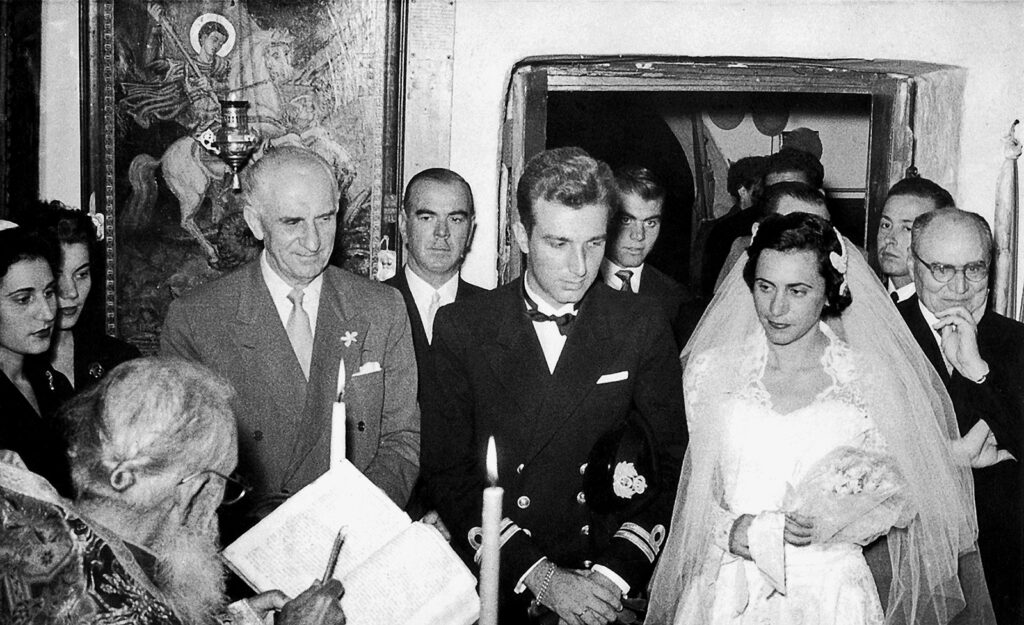
Maria Tzannetaki continued to work at the Institute even after the birth of her children Petros (1955) and Antonia-Ioli, nicknamed Tonia (1959). She was close friends with many different members of the Institute. In addition to the Kunze and Ohly families, the photographer Eva-Maria Czakó (nicknamed Czakolein, as Tonia Tzannetaki remembers), the archeologist Hildegunde Gropengießer, she was close to Alfred Mallwitz (Mallwitzaki mou, Mallwitz 2022, 31, a researcher in Athens since 1954) and his family, Gerhard Neumann (researcher in the photography archive, 1963–1967) and his wife Ms. Charikleia, Peter R. Franke (researcher from the Commission for Ancient History, 1961–1964) and his wife Eleonore, Werner Fuchs (researcher, 1962–1966) and his English wife, with whom Tzannis Tzannetakis practiced his English (personal memory of Tonia Tzannetaki – Tzannis Tzannetakis in fact was responsible for the Greek translation of Patrick Leigh Fermor’s book Mani, which Tzannetakis produced in exile on Cythera; the two later became friends), and Gottfried Gruben (who worked in the Kerameikos and later became a researcher in architectural history, 1958–1966) and his wife Doris. Rangoussi was also integrated in wider archeological circles and maintained lively friendships; she was close to the Karouzoi (personal memory of Tonia Tzannetaki), who in turn introduced Angelos Delivorrias to Maria and Tzannis Tzannetakis. Delivorrias later undertook numerous joint projects with Tzannetakis (A. Delivorrias in: Delivorrias – Chatzivassileiou 2017, 219 – 227). Thanks to her mediation, the young archaeologist Elena Karydi (now Walter-Karydi) would get a chance to work with Dieter Ohly in the Kerameikos from 1959 (personal memory of Elena Walter-Karydi). Olga Alexandri-Tzachou and Lila Marangou still have fond memories of their friend Maria Tzannetaki today.
Maria Tzannetaki was not only Kunze’s indispensable aide in offical business affairs of the Institute. According to his daughter-in-law, Erika Kunze-Götte, she was the soul of the Institute as she was completely integrated in its life. Angelos Delivorrias writes: “The pretty archeologist Maria Rangoussi-Tzannetaki worked at the German Archeological Institute as Kunze’s assistant and collaborator and actively looked after the newcomers to research everyday. When she finished her work, an equally handsome man often came to pick her up and left with her. That was Tzannis.” (“Ως βοηθός και συνεργάτης του Kunze, στο Γερμανικό Αρχαιολογικό Ινστιτούτο εργαζόταν μια πανέμορφη αρχαιολόγος, η Μαρία Ραγκούση-Τζαννετάκη, εκδηλώνοντας έμπρακτα την έγνοια της καθημερινά για τους νεοσσούς της έρευνας. Όταν μάλιστα τελείωνε τη δουλειά της, ένας επίσης πανέμορφος άνδρας ερχόταν συχνά να την πάρει να φύγουν μαζί. Αυτός ήταν ο Τζαννής”; A. Delivorrias in: Delivorrias – Chatzivassileiou 2017, 220). In his written statement to us, Vassileios Petrakos recalled that readers in the library of the DAI Athens found everything in pristine condition every morning; and if anyone needed something, they could always turn to the ever-helpful Maria Tzannetaki. She was probably also involved in the library affairs in various aspects; her engagement in an inventory with the rest of the collaborators of the Institute is attested (2nd quarterly report 1956, Archive of the DAI Athens).
Tzannetaki’s good relations with her colleagues is reflected on many photographs of her taken by or with them. Together with her husband Tzannis, she occasionally visited Olympia, where she asked Kunze and Mallwitz about the progress of the excavations. One photograph shows the Tzannetakis together with the Kunzes in front of the excavation house in Olympia (fig. 3)
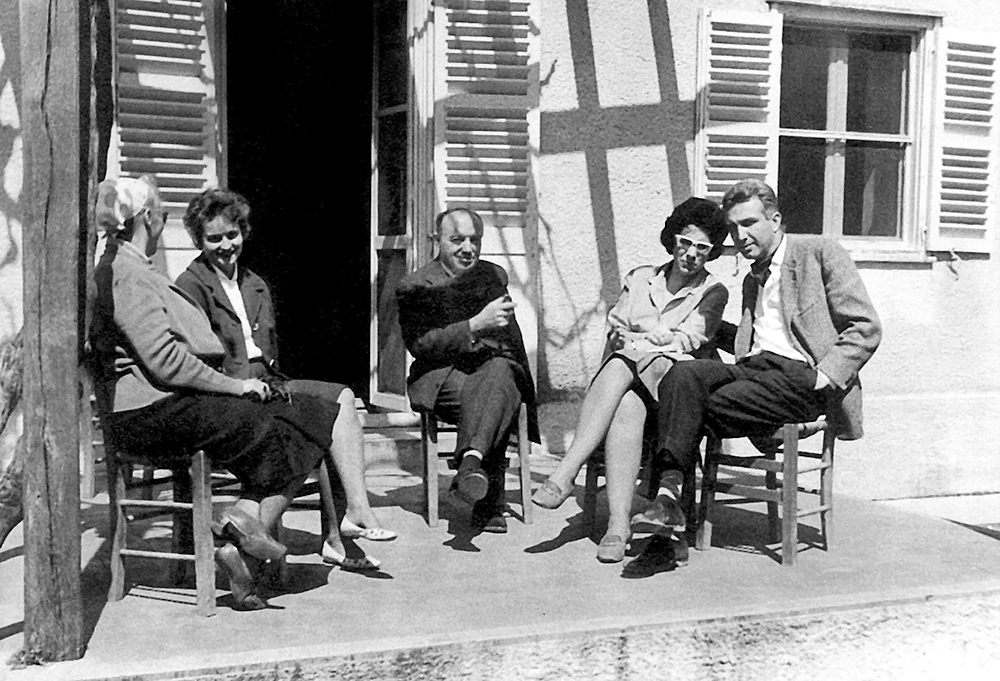
Other private photographs show her together with the Mallwitz family, for example, on the beach in Loutsa or at their house on Aigina (fig. 4).
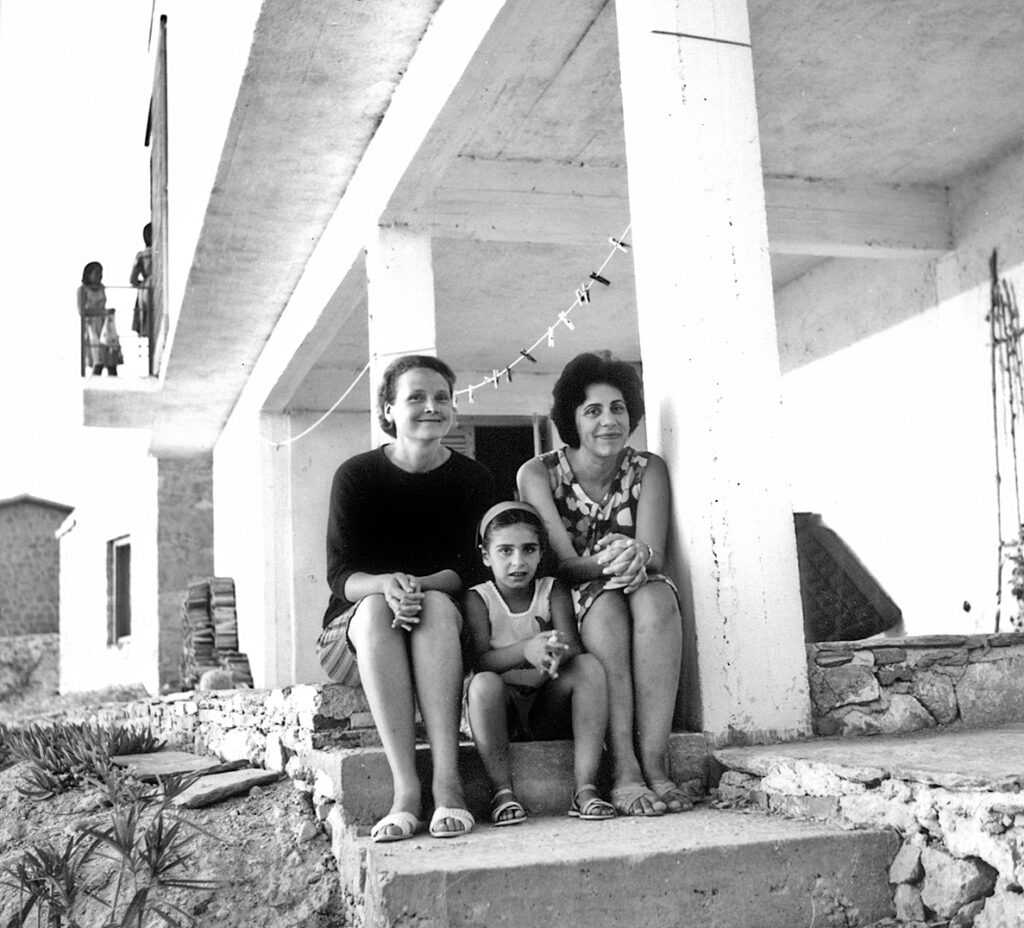
She was remembered as bubbly, warm, passionate, friends with everyone at the Institute, and deeply appreciated (“esteemed secretary of the Institute” [“hochgeschätzte Institutssekretärin”], personal memory of F. Hamdorf). “There was something generously noble about her; she spoke a very beautiful, marvelous German; she was a noble, educated lady,” Erika Kunze-Götte remembered in 2023. The Kunzes and even their children, with their grandchildren, often visited the Tzannetaki family in summer at their home on Paros.
A new, momentous chapter began for Maria Tzannetaki and her family when the military putsch shook Greece on April 21, 1967. Her husband Tzannis left the navy in protest the very next day. He was monitored and followed – and apparently the Institute and its guests and projects were too, as Friedrich Wilhelm Hamdorf remembred in his interview – he was arrested in 1969, placed for a year in solitary confinement, and subsequently another year in exile on Cythera.
Personnel changes also took place during the year of the putsch. Emil Kunze retired on March 31, 1967 and Ulf Jantzen succeeded him as director on August 18, 1967. On January 31, 1968 Maria Tzannetaki left the Institute. There may have been many reasons for her departure. Jantzen, the new director, who signed her dismissal, believed he needed to restructure the department; he needed a secretary and could not impose additional duties on a “lady of society.” After 14 years of close collaboration with the Institute under Kunze, in the midst of new personal challenges during the junta, and confronted with a new director who deliberately wanted to break with his predecessor’s approach, Maria Tzannetaki herself may not have been interested in staying on at the Institute, as her daughter Tonia suspects. Her impression is that it was her mother’s decision to leave; she had her hands full as it was. But she always recalled the Institute fondly and maintained friendships with many of its members. A few months after her departure, she took part in the “Richtfest” of the new excavation building at Olympia together with her daughter Tonia on May 25, 1968, where she can be seen alongside Kunze (fig. 5). Aliki Moustaka recalls that Tzannetaki regularly visited the Institute for Winckelmann celebrations even into the early 1980s. And even upon Emil Kunze’s last trip to Greece shortly before his 85th birthday in 1986, Maria Tzannetaki was among the people who helped making his trip as pleasing as possible (Schiering 1995, 25).
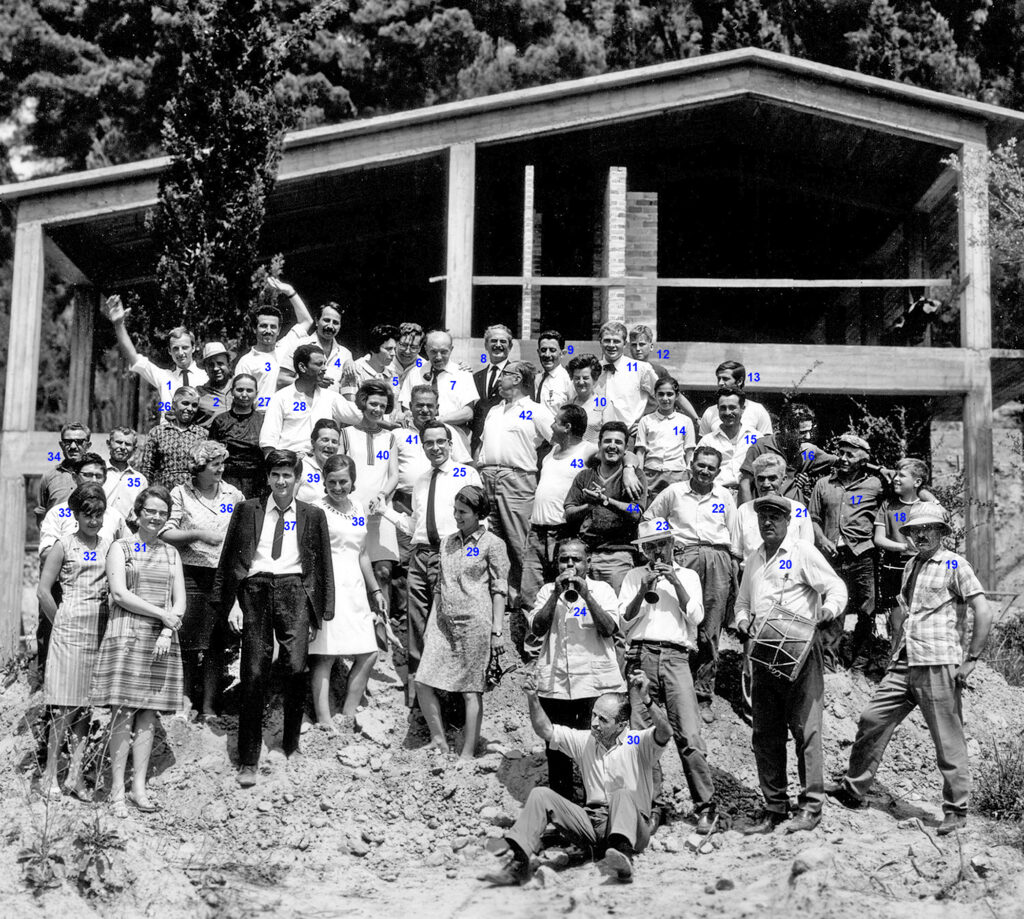
When the Nea Demokratia was founded in 1974 and Tzannis Tzannetakis spent the next 30 years playing an important part in the political life of Greece, Maria Tzannetaki had various interests and obligations at his side. Tzannetakis held different offices: he was General Secretary of the Greek National Tourism Organisation (EOT), Minister of Public Works, even Prime Minister briefly, Minister of National Defense and Minister of Culture, and Vice-President for three and a half years. Maria Tzannetaki’s charm and great charisma can be seen in a photograph taken during a conversation between the couple and the German chancellor Willy Brandt during a state visit in Greece in 1989 (fig. 6).
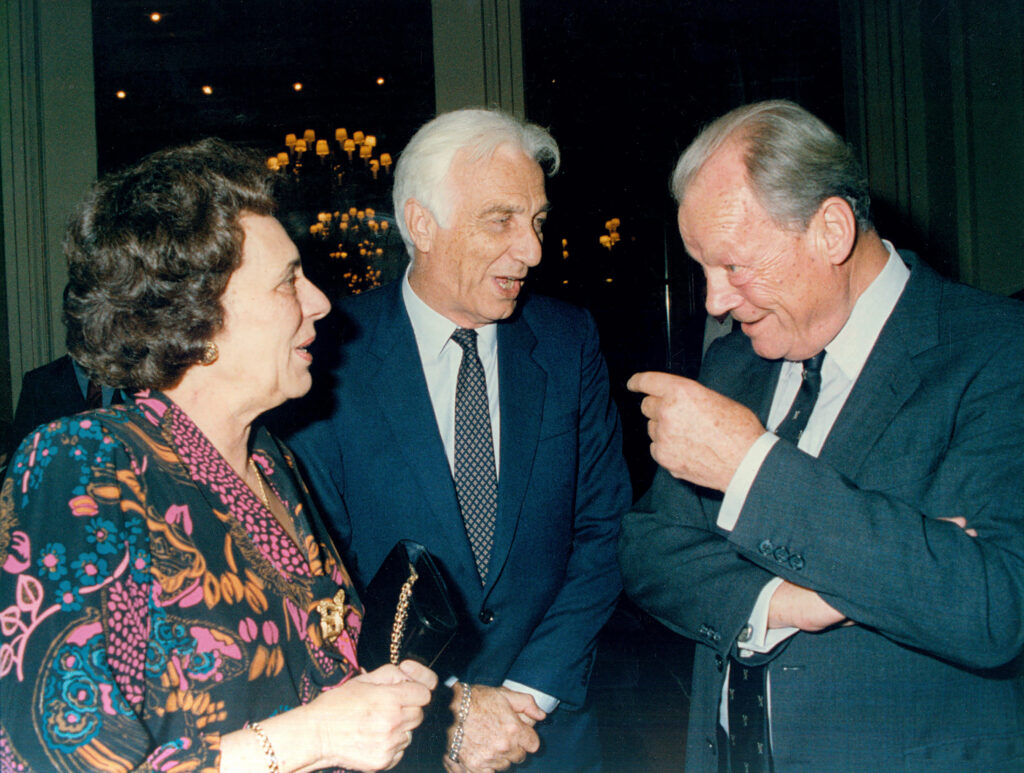
When Maria Tzannetaki died in 2004, Eleni Bistika eulogized her as follows in the Greek newspaper Kathimerini (November 19, 2004, https://www.kathimerini.gr/opinion/696683/maria-tzannetaki-mia-zoi-gemati-agapi-kai-endiaferonta-tora-apochairetismos/, accessed on February 15, 2023):
“She was proud of her gallant husband, a democrat and naval officer who was imprisoned and exiled during the junta. It was then that Maria left her successful career as an archeologist at the German Archeological Institute and stayed near her children, accompanying Tzannis with her beautiful and stately presence as he embarked on his new political career after independence.”
„Καμάρωνε τον λεβέντη σύζυγό της, τον δημοκράτη κι αγωνιστή αξιωματικό του Πολεμικού Ναυτικού που φυλακίστηκε και εξορίστηκε επί χούντας. Τότε ήταν που η Μαρία άφησε την επιτυχημένη καριέρα της ως αρχαιολόγου στη γερμανική Αρχαιολογική Σχολή κι έμεινε κοντά στα παιδιά της, συντροφεύοντας με την ωραία και αρχοντική παρουσία της τον Τζαννή στη νέα του πολιτική καριέρα μετά τη μεταπολίτευση.“
The DAI Athens wishes to remember this presence of one of the many women who was not primarily a scholar but gave valuable support to the Athens Department (fig. 7).
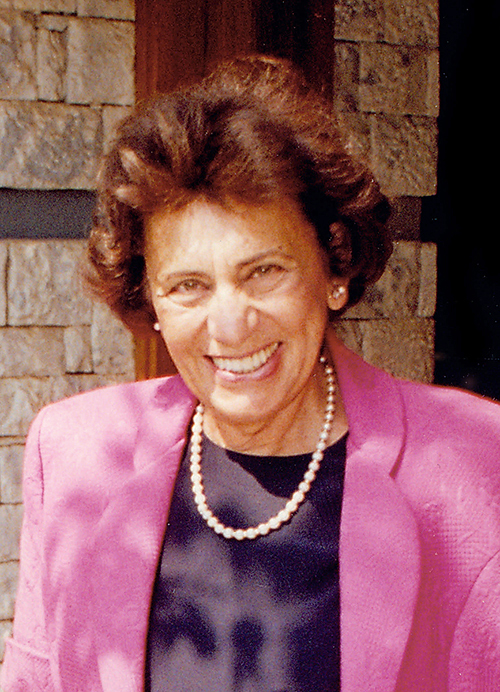
Works cited
Brandt 2021
Brandt, Jubiläum 2024 – 150 Jahre DAI Athen, in: AtheNea 2020/2021, 8–11
Chalazonitis et al. 2005
M. Chalazonitis – K. D. Kousoulis – P. K. Tsoukas – V. P. Androulakis – F. A. Giannakou – A. M. Roxana – N. P. Sekeroglou, Το Συμβούλιο της Επικρατείας. Ο θεσμός και τα πρόσωπα (Athens 2005)
Delivorrias – Chatzivassileiou 2017
A. Delivorrias – E. Chatzivassileiou (eds.), Τζαννής Τζαννετάκης (1927–2010). Από τη συνειδητότητα στη δράση (Athens 2017)
Mallwitz 2022
D. Mallwitz, Autó I. Zwischen A und O. Autobiographie von Delta Mi, Band I (Ortwig an der Oder 022)
Schiering 1995
W. Schiering, Gedenkrede auf Emil Kunze, AM 110, 1995, 13–25
Archival sources:
DAI Athens, wissenschaftliches Archiv, varia
DAI Athens, Archiv “Jubiläum 2024 – Institutsgeschichte.” Interviews with O. Alexandri-Tzachou, E. Kunze-Götte, F. Hamdorf, V. Petrakos.
We especially want to thank Tonia Tzannetaki, Erika Kunze-Götte, and Detlef Mallwitz for providing us with extensive information and for making photographs available; and we further thank Wolf-Dietrich Heilmeyer, Gerhild Hübner, Lila Marangou, Aliki Moustaka, and Elena Walter-Karydi for sharing their memories with us.
